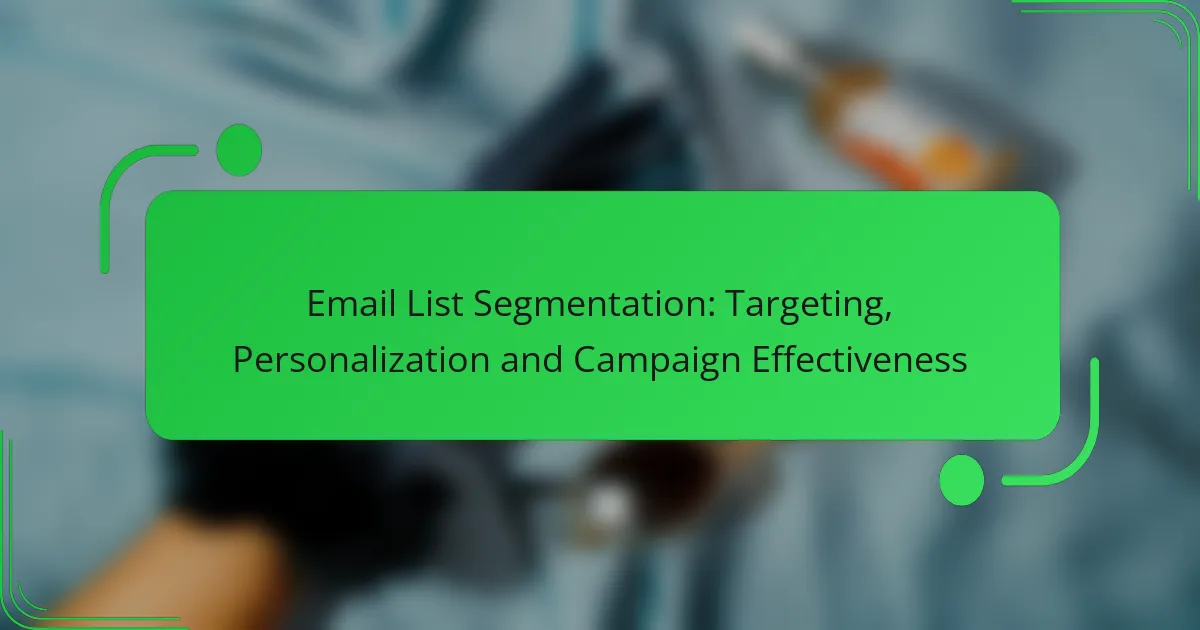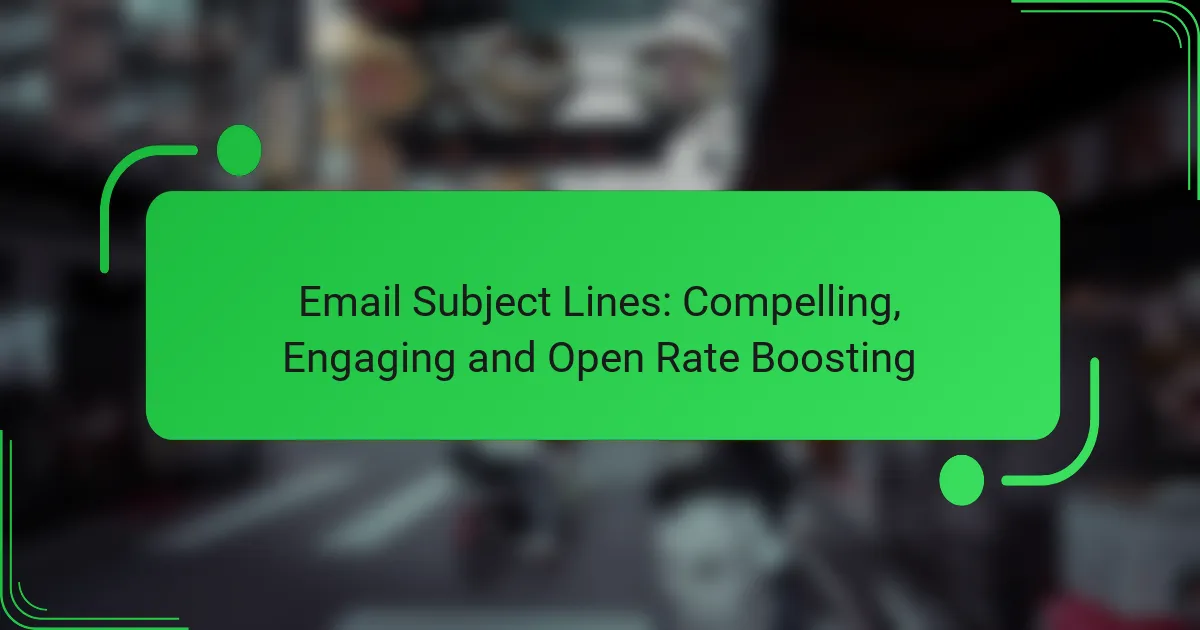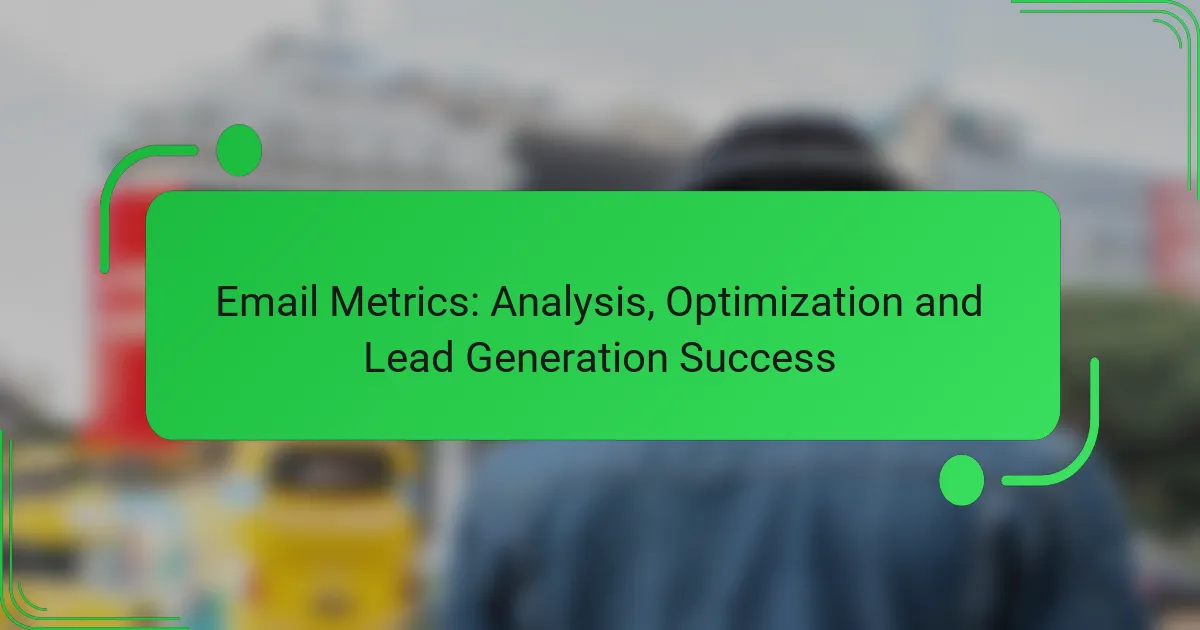Email list segmentation is a powerful strategy that divides your audience into distinct groups based on shared characteristics, enabling more targeted and personalized communication. By tailoring your messaging to the unique needs and preferences of each segment, you can significantly enhance engagement and improve conversion rates, ultimately leading to more effective email campaigns.
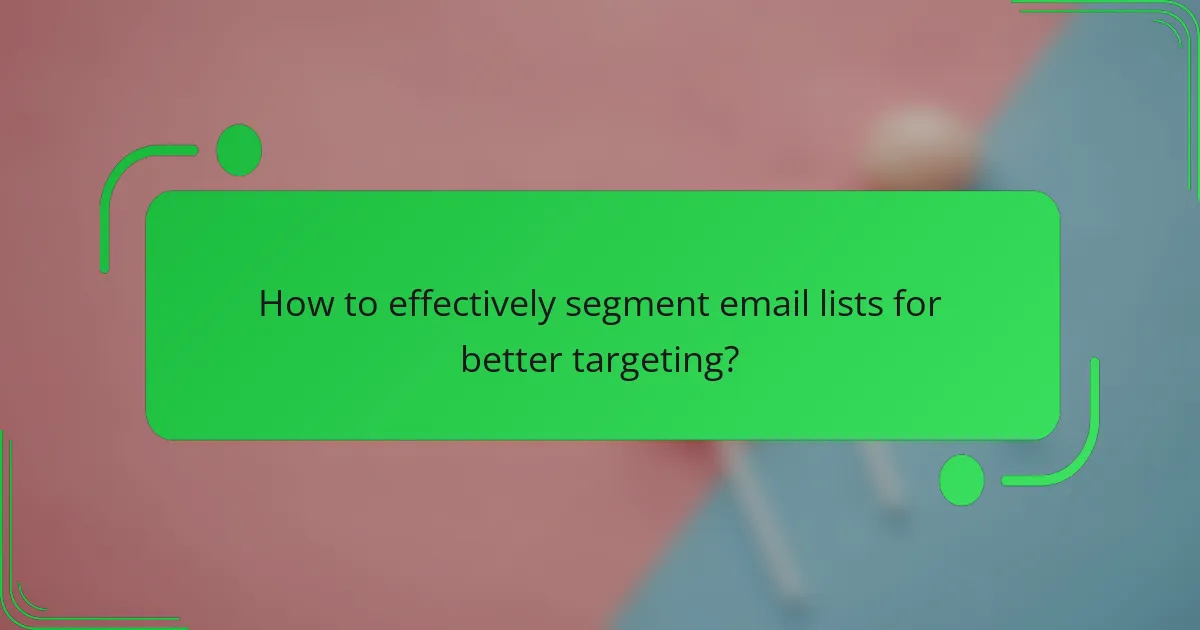
How to effectively segment email lists for better targeting?
Effective email list segmentation enhances targeting by dividing your audience into distinct groups based on shared characteristics. This approach allows for more personalized communication, which can significantly improve engagement and conversion rates.
Demographic segmentation
Demographic segmentation involves categorizing your email list based on quantifiable characteristics such as age, gender, income, education, and marital status. This method helps tailor your messaging to resonate with specific groups, increasing the likelihood of engagement.
For example, a luxury brand may target high-income individuals with exclusive offers, while a student discount campaign could focus on younger demographics. Understanding these traits can guide your content and promotional strategies effectively.
Behavioral segmentation
Behavioral segmentation focuses on how subscribers interact with your emails and website. This includes analyzing purchase history, email open rates, click-through rates, and engagement levels. By understanding these behaviors, you can create targeted campaigns that address specific needs or interests.
For instance, you might send re-engagement emails to users who haven’t interacted in a while or special offers to those who frequently purchase. This approach helps in optimizing your marketing efforts based on actual user behavior.
Geographic segmentation
Geographic segmentation divides your audience based on their location, such as country, region, or city. This is particularly useful for businesses with location-specific products or services, allowing you to tailor your messaging to local preferences and cultural nuances.
For example, a restaurant chain might promote different menu items based on regional tastes or seasonal offerings. Additionally, understanding local regulations can help ensure compliance in your marketing efforts.
Psychographic segmentation
Psychographic segmentation categorizes your audience based on their lifestyles, values, interests, and personality traits. This deeper understanding allows for highly personalized content that resonates on an emotional level with your subscribers.
For example, a fitness brand might target health-conscious individuals with motivational content and workout tips, while a travel company could focus on adventure seekers with tailored travel packages. This segmentation can lead to stronger brand loyalty and engagement.
Firmographic segmentation
Firmographic segmentation is similar to demographic segmentation but focuses on businesses rather than individuals. It includes characteristics such as company size, industry, revenue, and location. This is crucial for B2B marketing strategies, as it allows for targeted messaging that addresses specific business needs.
For instance, a software company might create different campaigns for small startups versus large enterprises, highlighting features that cater to each segment’s unique challenges. This targeted approach can enhance the effectiveness of your marketing campaigns.
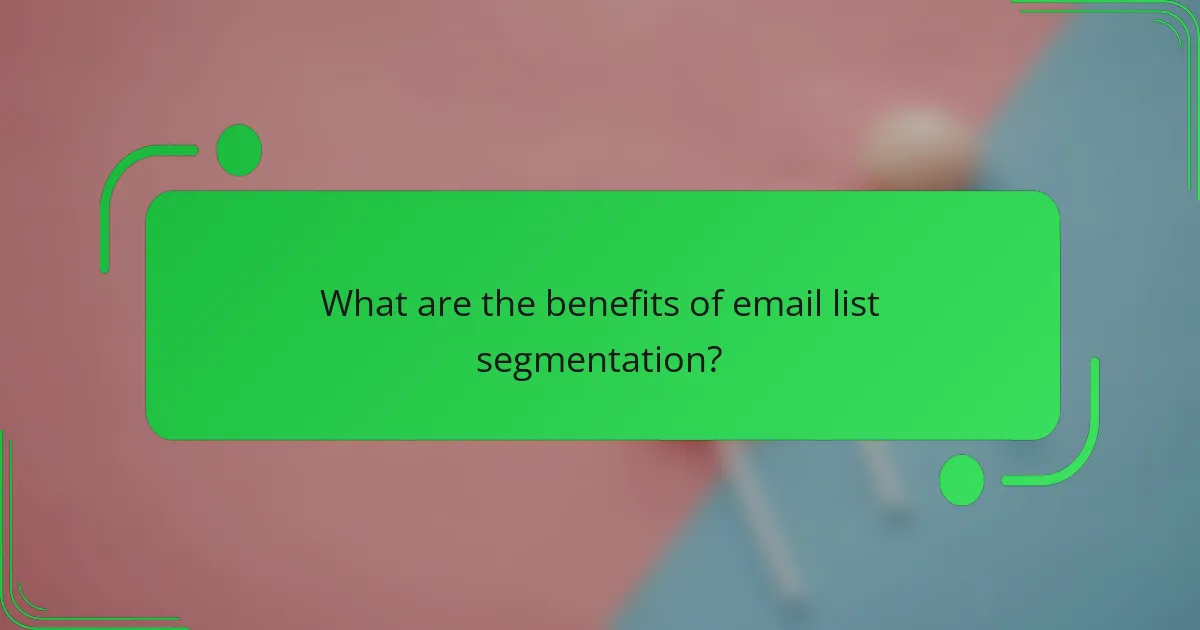
What are the benefits of email list segmentation?
Email list segmentation offers several advantages, including improved targeting, increased relevance, and enhanced overall campaign effectiveness. By dividing your email list into smaller, more specific groups, you can tailor your messaging to meet the unique needs and preferences of each segment.
Increased open rates
Segmenting your email list can lead to higher open rates. When recipients receive emails that are relevant to their interests or behaviors, they are more likely to open them. For example, a retail brand might segment its list by past purchase behavior, sending promotions for similar products to those who have shown interest.
To maximize open rates, consider personalizing subject lines based on the segment’s characteristics. A/B testing different subject lines can also help identify what resonates best with each group.
Higher conversion rates
Email list segmentation can significantly boost conversion rates. By targeting specific groups with tailored offers, you can encourage more recipients to take action, such as making a purchase or signing up for a webinar. For instance, sending a limited-time discount to frequent buyers can create urgency and drive sales.
Utilize clear calls-to-action (CTAs) that align with the interests of each segment. This focused approach can lead to conversions that are several times higher than generic campaigns.
Improved customer engagement
Segmenting your email list enhances customer engagement by delivering content that resonates with recipients. When customers receive relevant information, they are more likely to interact with your emails, whether through clicks, shares, or replies. For example, a travel company might segment its audience by destination preferences, sending tailored travel tips and offers.
Regularly analyze engagement metrics to refine your segments and ensure that your content remains relevant. Engaged customers are more likely to become loyal advocates for your brand.
Enhanced personalization
Email list segmentation allows for deeper personalization, making each recipient feel valued. By understanding the demographics, behaviors, and preferences of your segments, you can create highly personalized messages that speak directly to their needs. For instance, sending birthday greetings with special offers can foster a personal connection.
Consider using dynamic content in your emails that changes based on the recipient’s segment. This can include personalized product recommendations or tailored content that aligns with their interests, further enhancing the customer experience.
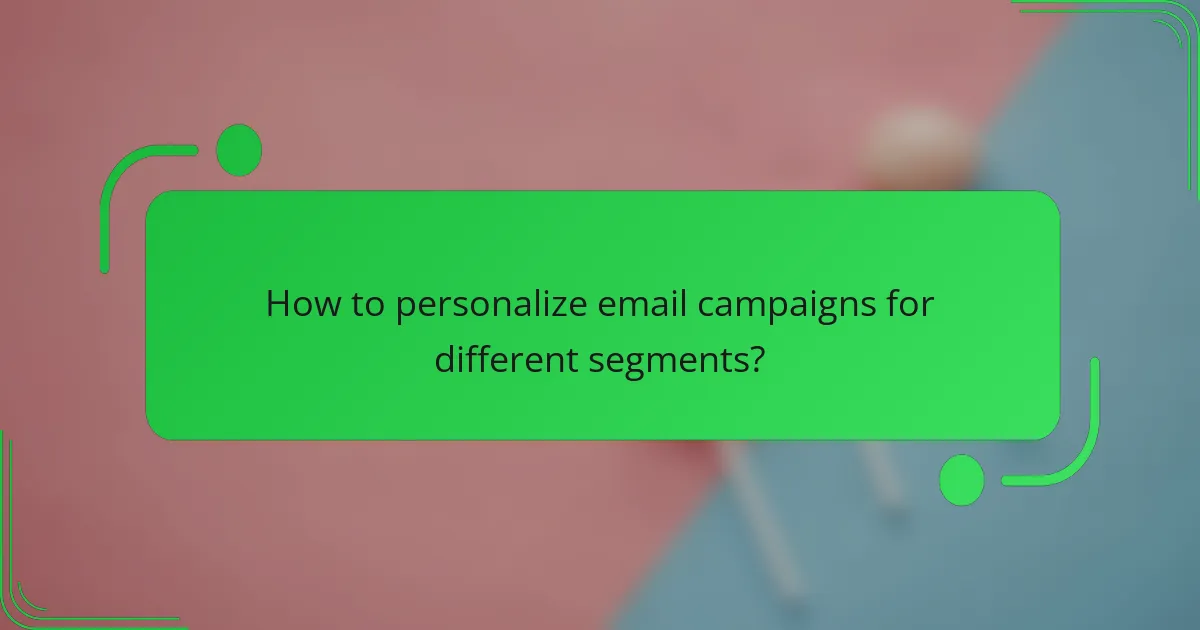
How to personalize email campaigns for different segments?
Personalizing email campaigns for different segments involves tailoring content to meet the specific interests and behaviors of each group. This approach enhances engagement and improves overall campaign effectiveness by making messages more relevant to recipients.
Dynamic content
Dynamic content allows you to customize parts of your email based on the recipient’s profile or behavior. For example, you can change images, text, or offers depending on the segment, such as location or past purchase history. This personalization can lead to higher engagement rates, as recipients see content that resonates with them.
To implement dynamic content effectively, use email marketing platforms that support this feature. Ensure that your data is clean and up-to-date to avoid sending irrelevant content. Regularly test different dynamic elements to see what performs best for each segment.
Tailored subject lines
Creating tailored subject lines is crucial for increasing open rates among different segments. A subject line that reflects the interests or needs of a specific group can significantly enhance the likelihood of engagement. For instance, using a local event in the subject line for a geographically targeted segment can capture attention more effectively than a generic title.
When crafting subject lines, consider using personalization tokens that include the recipient’s name or location. Keep your subject lines concise and compelling, ideally under 50 characters, to ensure they display well on mobile devices.
Segment-specific offers
Segment-specific offers are promotions tailored to the unique preferences of different groups within your email list. For example, you might offer a discount on fitness gear to a segment interested in health and wellness, while providing a travel deal to another segment focused on vacations. This targeted approach can drive higher conversion rates.
To create effective segment-specific offers, analyze past purchase behavior and engagement metrics. Use A/B testing to refine your offers and determine which ones resonate best with each segment. Ensure that your offers comply with local regulations regarding promotions and discounts to avoid any legal issues.
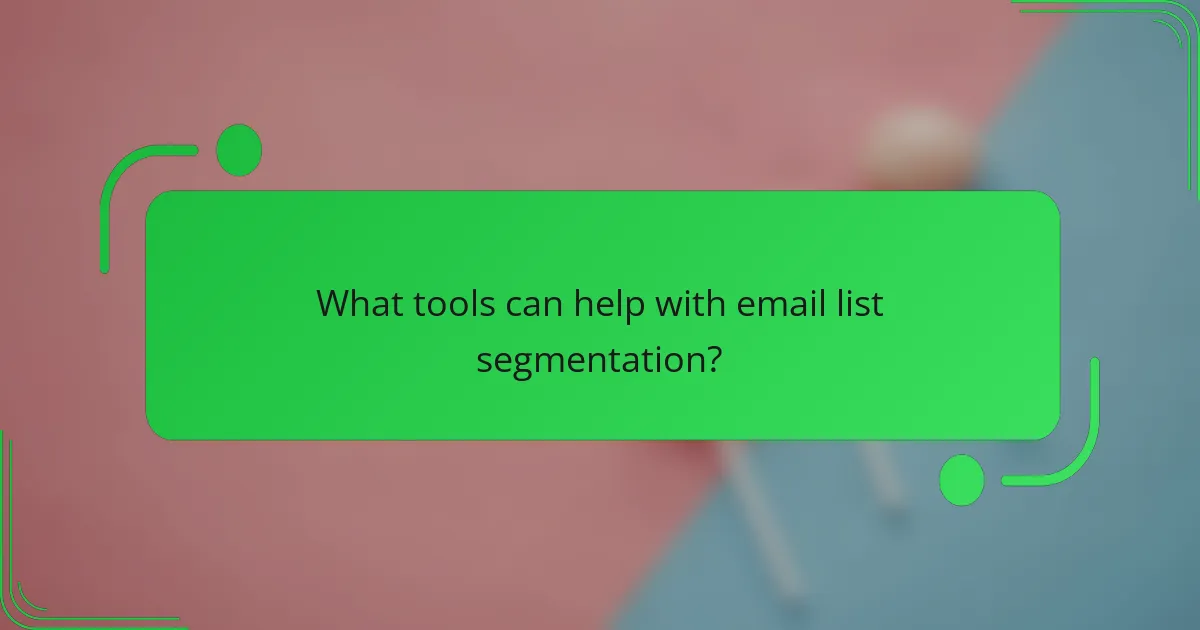
What tools can help with email list segmentation?
Several tools can enhance email list segmentation by allowing marketers to categorize their audience based on various criteria. These platforms provide features that enable targeted messaging, improving personalization and campaign effectiveness.
Mailchimp
Mailchimp offers robust segmentation capabilities that allow users to create targeted groups based on demographics, behavior, and engagement levels. With its user-friendly interface, marketers can easily set up segments and automate campaigns tailored to specific audiences.
For example, you can segment your list to target subscribers who have opened your last three emails but haven’t made a purchase. This approach can help increase conversion rates by focusing on engaged users who may need an extra incentive to buy.
ActiveCampaign
ActiveCampaign excels in advanced segmentation and automation features, enabling users to create highly personalized campaigns. It allows for segmentation based on user actions, such as website visits or email interactions, which helps in delivering relevant content to each subscriber.
Consider using ActiveCampaign to segment your audience based on their stage in the customer journey. For instance, you can target new subscribers with a welcome series while sending re-engagement emails to inactive customers, ensuring your messaging aligns with their needs.
HubSpot
HubSpot provides powerful segmentation tools integrated within its CRM, making it easy to manage contacts and tailor communications. Users can segment lists based on a variety of criteria, including lifecycle stage, interests, and previous interactions.
Utilizing HubSpot’s capabilities, you can create dynamic lists that automatically update as contacts meet specific criteria. This ensures your campaigns are always reaching the right audience without manual adjustments, enhancing efficiency and effectiveness in your marketing efforts.
